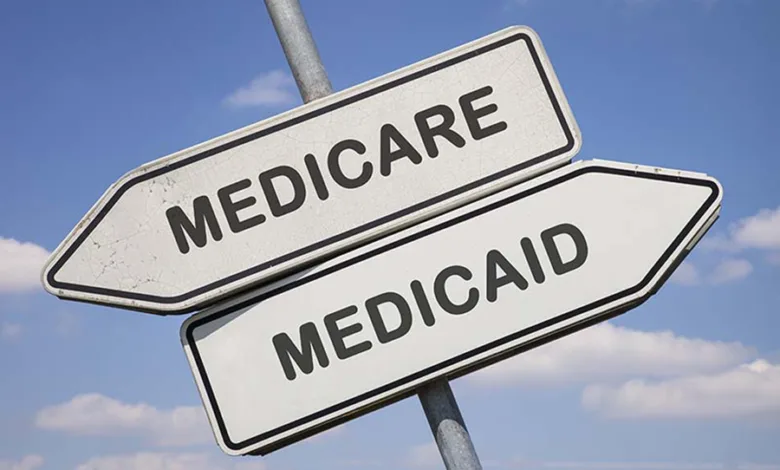What’s the Difference between Medicare and Medicaid?

Medicare and Medicaid are two government-funded healthcare programs that provide critically necessary access to healthcare services for millions of Americans. These two programs offer different healthcare coverage for individuals and families with various financial needs.
Medicare serves individuals aged 65 and over and those with certain disabilities and medical conditions. Medicaid provides healthcare coverage to low-income people, regardless of age or medical condition.
Understanding the differences between Medicare and Medicaid is essential to make informed decisions about healthcare coverage and access to needed services. Understanding the eligibility requirements, coverage options, funding sources, and cost-sharing requirements of each program is essential for those who need healthcare services. By being informed about the differences between Medicare and Medicaid, individuals can gain the knowledge and resources they need to make informed choices about their healthcare.
Eligibility
Medicare is primarily based on age and disability status, while Medicaid eligibility is based on income and other factors. Generally, people 65 and over or those receiving Social Security disability benefits for at least two years are eligible to enroll in Medicare. Individuals with conditions like end-stage renal disease or ALS may also qualify regardless of age.
Medicaid coverage is generally only available to low-income people, and the specific income limits and eligibility criteria differ by state. Some states have expanded Medicaid coverage under the Affordable Care Act, which has increased the income limit for eligibility in those states. Additionally, some individuals may be eligible based on age, disability status, or pregnancy status. Determining which program(s) you qualify for can be complex, so it’s best to consult a healthcare professional or an eligibility specialist for assistance.
Coverage
Medicare and Medicaid are government healthcare programs, though they differ in terms of the coverage they provide. Medicare primarily covers hospital stays, doctor visits, and prescription drugs. Specifically, Medicare Part A covers hospital stays, skilled nursing facility care, hospice care, and home health care, and Medicare Part B covers doctor visits, outpatient care, and preventative services. Medicare Part D covers prescription drugs.
Meanwhile, Medicaid covers a broader range of services, such as long-term care, dental and vision care, home health services, and other services not covered by Medicare. Additionally, Medicaid may cover certain social services, such as respite care for caregivers and transportation to medical appointments. The specific services covered by Medicaid can also vary by state. Lastly, Medicare has limitations on what services it will cover, such as certain prescription drugs and dental and vision care.
Funding
Medicare and Medicaid are government-funded health insurance programs, though the funds distribute differently. Medicare is funded primarily through payroll taxes, which workers and their employers pay. The current rate is 1.45% of earnings, with an additional 0.9% tax for those who earn above a certain threshold.
In addition, beneficiaries pay Medicare premiums for specific services and available revenue sources, such as income and corporate taxes. On the other hand, Medicaid is a joint effort between the federal government and the states. The federal government provides a base level of funding, and the states provide additional funds to cover the remaining costs.
The amount of federal funding varies by state and by the specific program within Medicaid. Additionally, the federal government matches a percentage of each state’s funds on Medicaid, with higher matching rates for states with lower per capita incomes. Ultimately, Medicare and Medicaid are vital healthcare programs allowing millions of Americans to access affordable healthcare.
Cost-Sharing
Medicare and Medicaid are both funded by a combination of taxes and government funds. Medicare requires beneficiaries to pay certain costs out of pocket, including deductibles, copayments, and coinsurance. The amount that Medicare beneficiaries must pay out of pocket can vary depending on their circumstances and the specific services needed. For example, in 2023, the Medicare Part A deductible for hospital stays is $1,600 per benefit period.
Medicaid, on the other hand, has minimal cost-sharing requirements. While states have some flexibility in setting their cost-sharing regulations, the federal government limits the amount of cost-sharing that states can impose. Generally, Medicaid beneficiaries are not required to pay premiums, deductibles, or coinsurance for most services.
However, cost-sharing amounts may be required, such as small copayments for certain prescription drugs or non-emergency visits to the emergency department. Additionally, some Medicaid programs, such as those for long-term care, may require beneficiaries to pay a share of their income towards the cost of their care. Medicare beneficiaries generally pay more out-of-pocket costs than Medicaid beneficiaries. These costs depend on their circumstances and the services needed.
Managed Care
Managed care is a health delivery system that uses a network of healthcare providers, such as doctors and hospitals, to deliver coordinated and efficient care. Government programs and private insurance companies use managed care plans like Medicare and Medicaid.
These plans use a variety of strategies to control costs, such as negotiating lower prices for services and requiring utilization reviews for other services. Managed care plans offer several benefits, such as improved care coordination and cost savings, but also have some limitations, such as restricted provider networks and restrictions on specific services or treatments.




